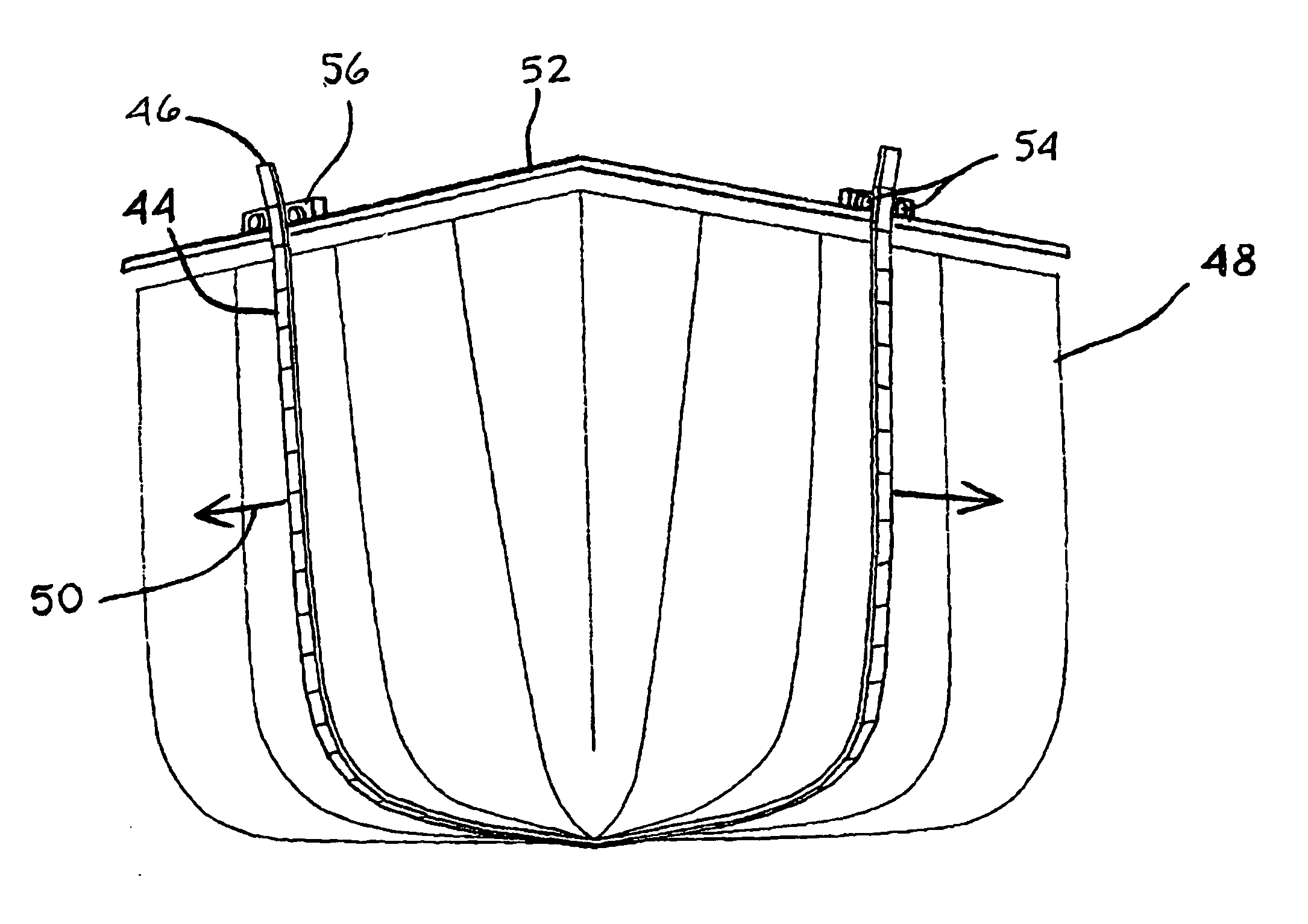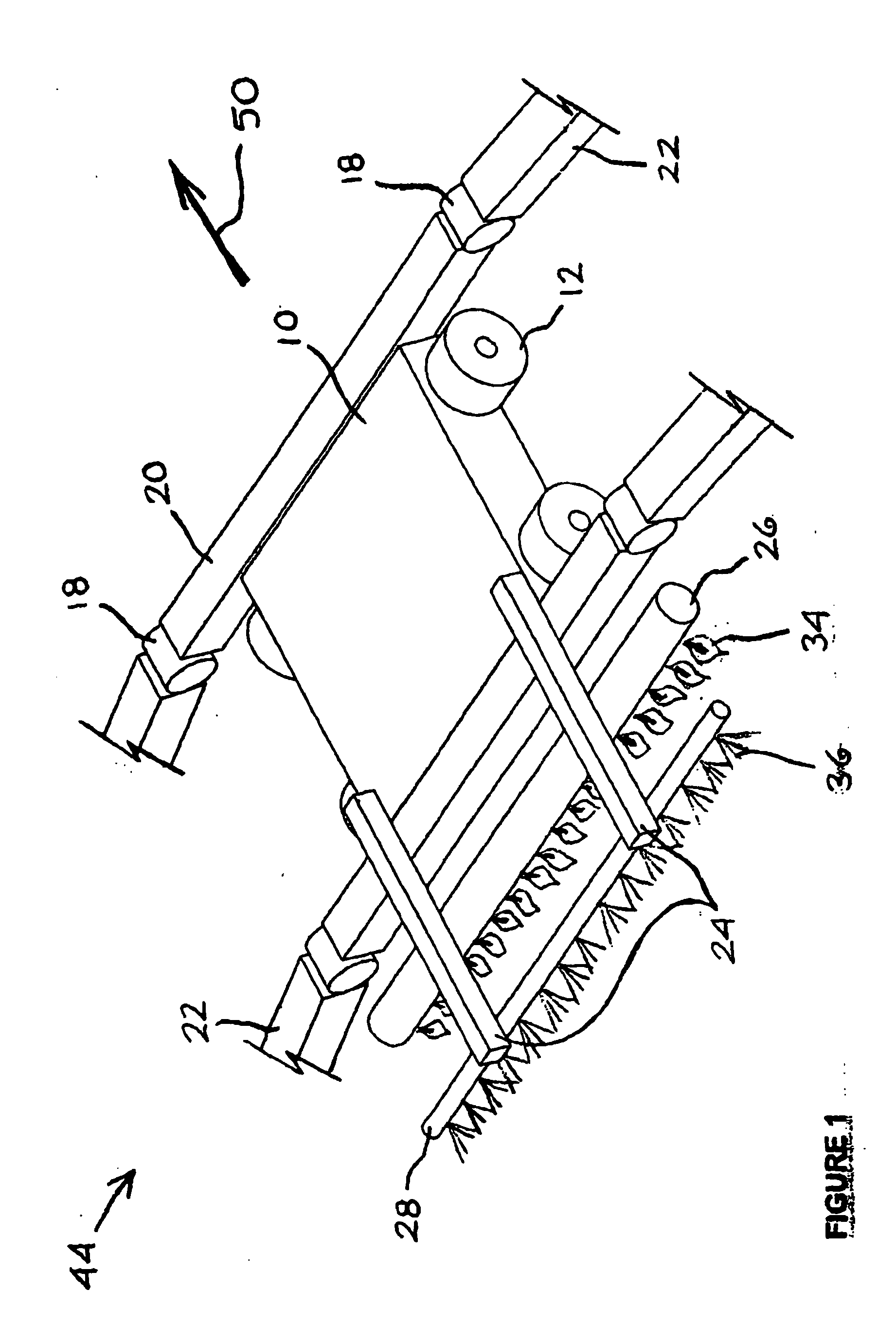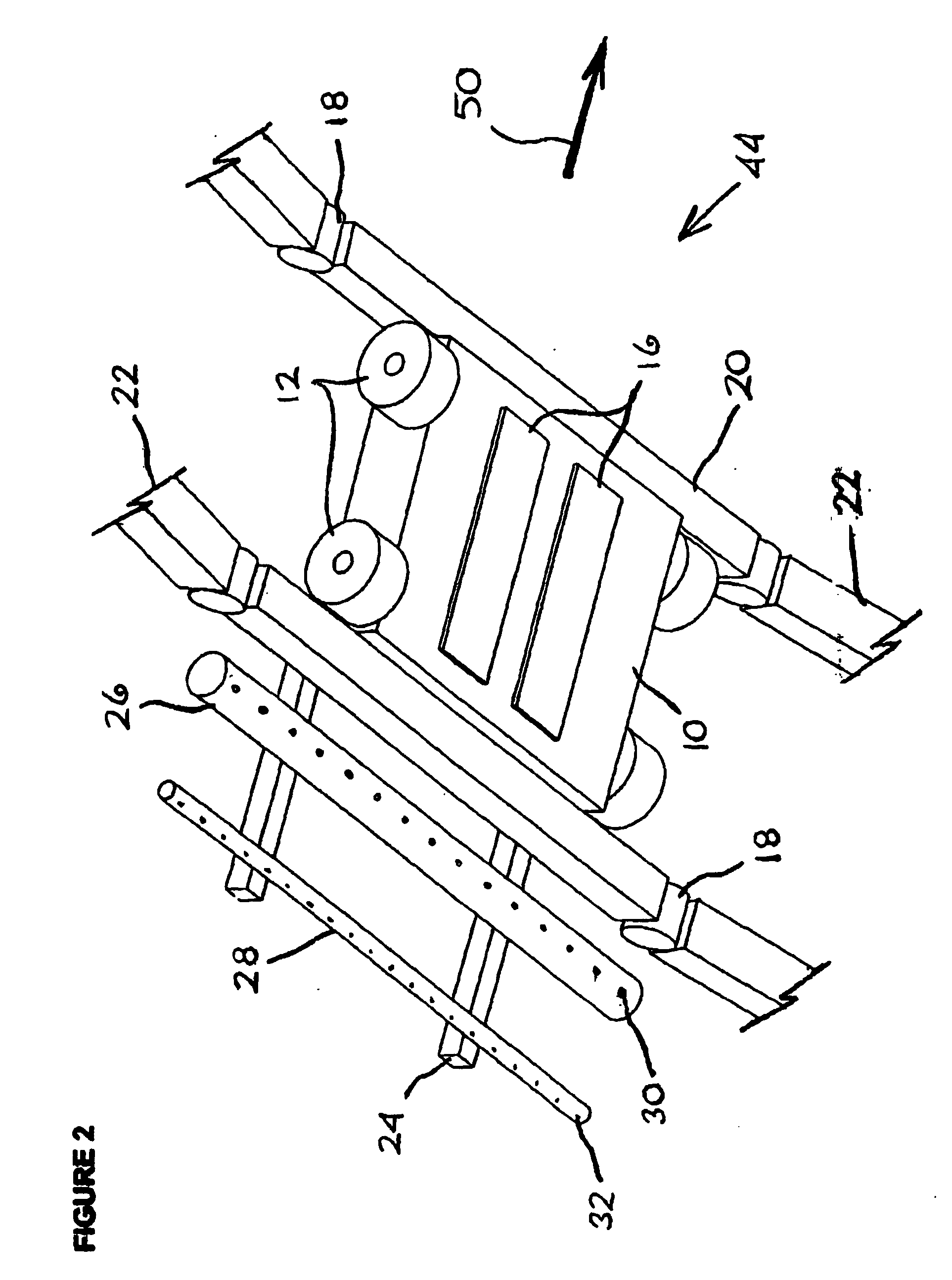Skinned structures of air hardenable or liquid quench hardenable steel plate and methods of constructing thereof
a technology of air hardenable or liquid quench hardenable steel plate, which is applied in the direction of manufacturing tools, soldering devices, auxillary welding devices, etc., can solve the problems of increasing the cost of these materials disproportionately to their strength-to-weight ratio, the lack of a viable heat-treating method, and the inability to control cracks. , to achieve the effect of reducing the cost of materials
- Summary
- Abstract
- Description
- Claims
- Application Information
AI Technical Summary
Benefits of technology
Problems solved by technology
Method used
Image
Examples
Embodiment Construction
[0024] The present invention provides ships and similar skinned structures of air hardenable or liquid quench hardenable steel plates, and methods that make the production of such structures possible for the first time.
[0025] The preferred embodiment of the present invention is skinned structures of air hardenable stainless steel due to its superior performance characteristics and lower cost as compared with other currently available hardenable steels. However, it is anticipated that various new formulations of air and liquid quench hardenable steel, including both new non-stainless and new stainless types, may be developed in response to the availability of the new methods of construction disclosed herein. Since these new formulations may indeed be competitive with, or even superior to, currently available air hardenable stainless steel for some skinned structural applications, and insofar as these new steels could not be used in the construction of skinned structural applications...
PUM
| Property | Measurement | Unit |
|---|---|---|
| hardenable | aaaaa | aaaaa |
| strength | aaaaa | aaaaa |
| strength-to-weight ratio | aaaaa | aaaaa |
Abstract
Description
Claims
Application Information
 Login to View More
Login to View More - R&D
- Intellectual Property
- Life Sciences
- Materials
- Tech Scout
- Unparalleled Data Quality
- Higher Quality Content
- 60% Fewer Hallucinations
Browse by: Latest US Patents, China's latest patents, Technical Efficacy Thesaurus, Application Domain, Technology Topic, Popular Technical Reports.
© 2025 PatSnap. All rights reserved.Legal|Privacy policy|Modern Slavery Act Transparency Statement|Sitemap|About US| Contact US: help@patsnap.com



